Each newly onboarded user with a free AWS or GCP account on a trial tier which can last for three days is provided. During this trial period user will have access to allocated resources.
10.4.1 Creating Ahasa Resource #
1. Login to Ahasa.
2. On the Left Panel, expand Canvas and click Canvas Management.

3. Click the + sign or the Create button to add a new canvas (Card View).

4. Click the Create button to add a new canvas (Grid View)
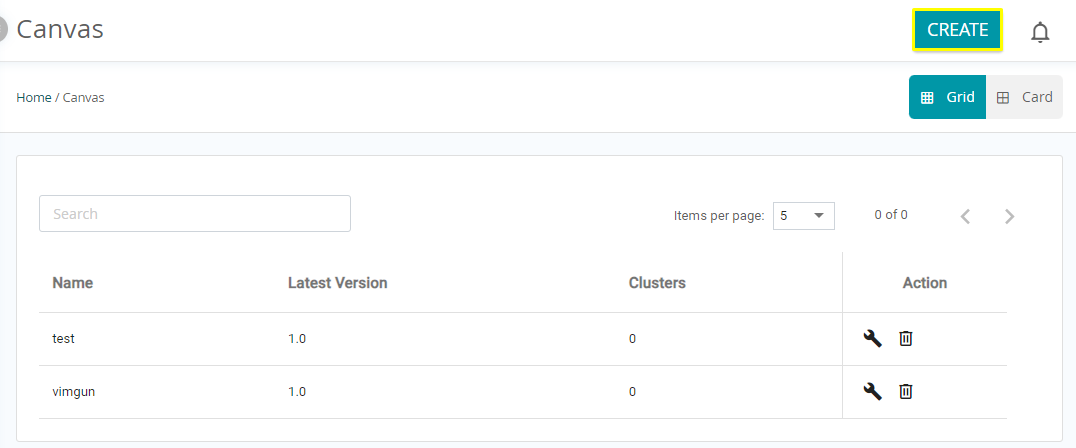
5. Drag and drop the required products from the available products section. (Refer 9.1 Creating a Canvas to know about creating canvas)
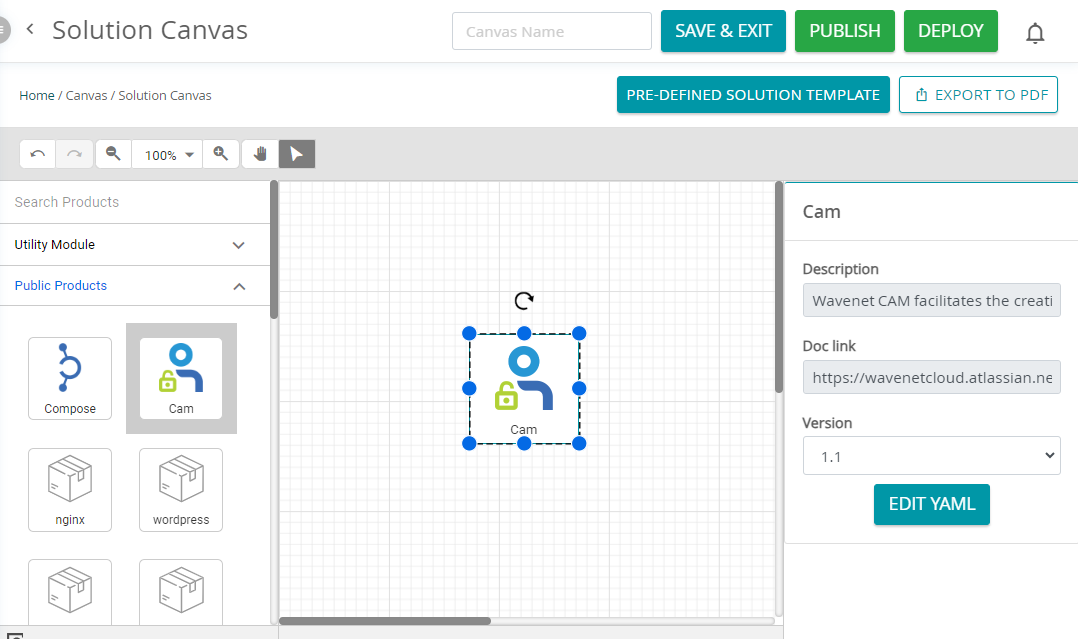
6. Once the canvas has been created with all the products, enter the Canvas Name and click Deploy to deploy the Canvas.

7. After clicking Deploy, you can choose deployment type to deploy your solution.

8. Once you select My Resource you can choose the cluster type.( To know about New Clusters and Imported Clusters refer 10.1 New Clusters, 10.2 Imported Clusters )
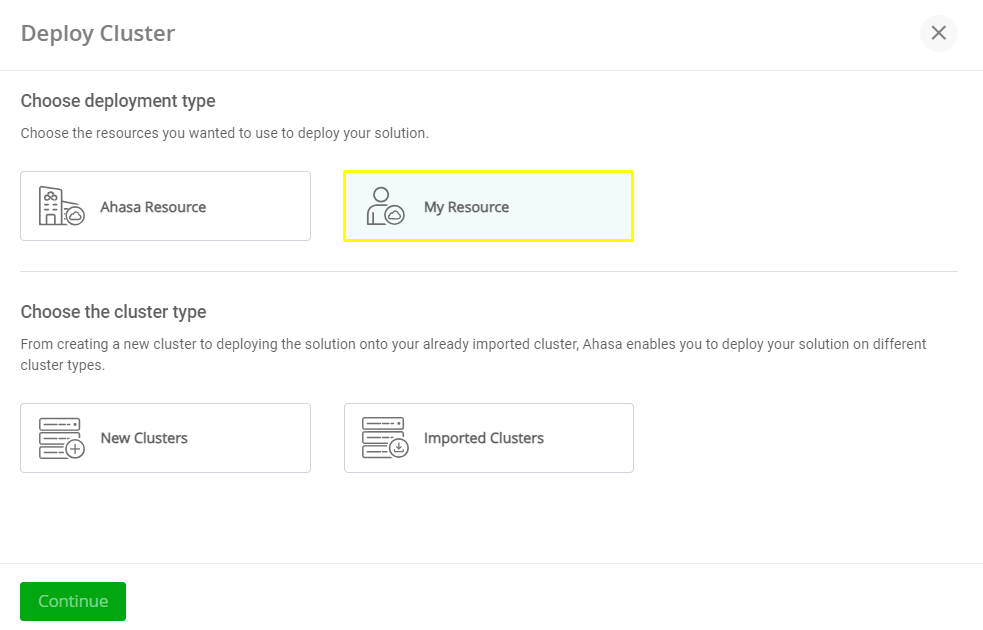
9. Once you select Ahasa Resource you can Start building and deploying the cluster without any financial commitment using Ahasa’s complementary cluster option.
10. Click Deploy to deploy on the Ahasa resource.
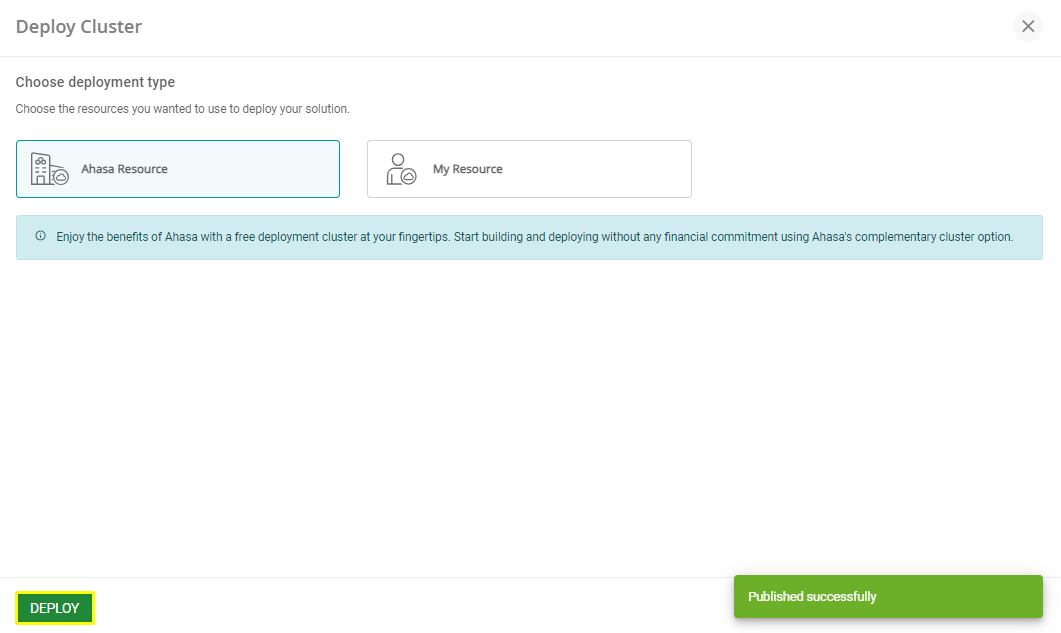
11. To see your Ahasa Resource, go to Left Pane and click Clusters.

12. Select Ahasa Resources tab.
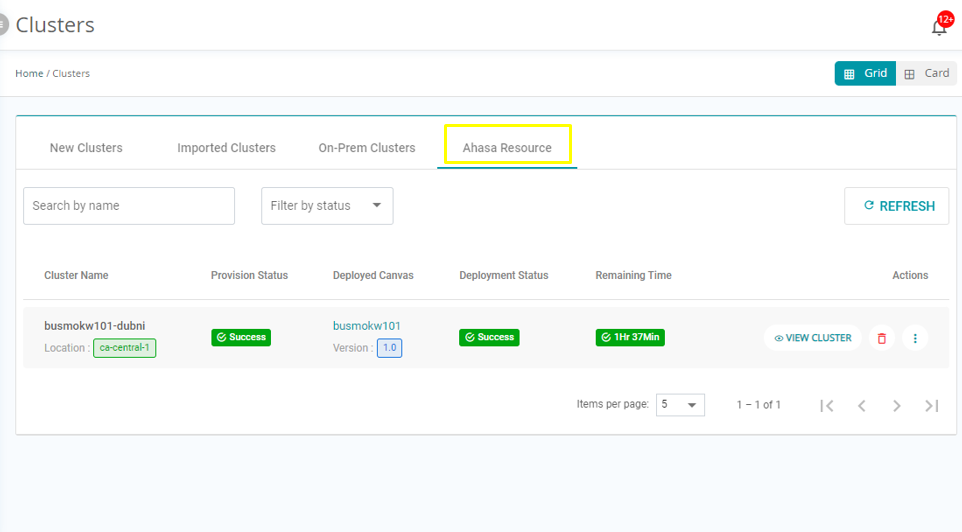
The following can be viewed in the Ahasa Resource interface,
- Cluster Name – The name of the cluster
- Provision Status – Provisioning Success / Fail status
- Deployed Canvas – The canvas name along with the version
- Deployment Status – Deployment Success / Fail status
- Remaining Time – Free trial timer will be displayed for 3 days.
10.4.2 Viewing a cluster #
1. Login to Ahasa.
2. On the Left Pane, click Clusters.

3. Select Ahasa Resources tab.

4. Select the required cluster and click ![]() View Cluster in the Actions column.
View Cluster in the Actions column.
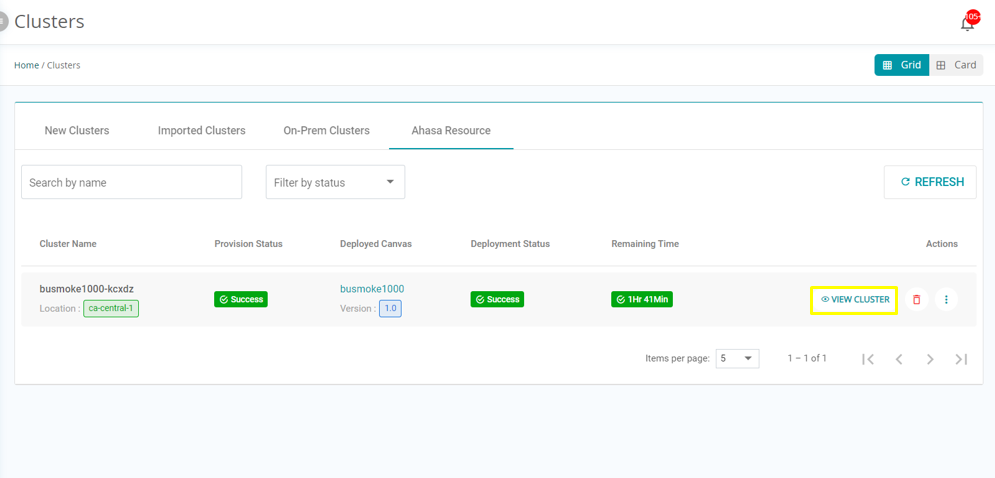
5.4. The Cluster Details will be displayed.

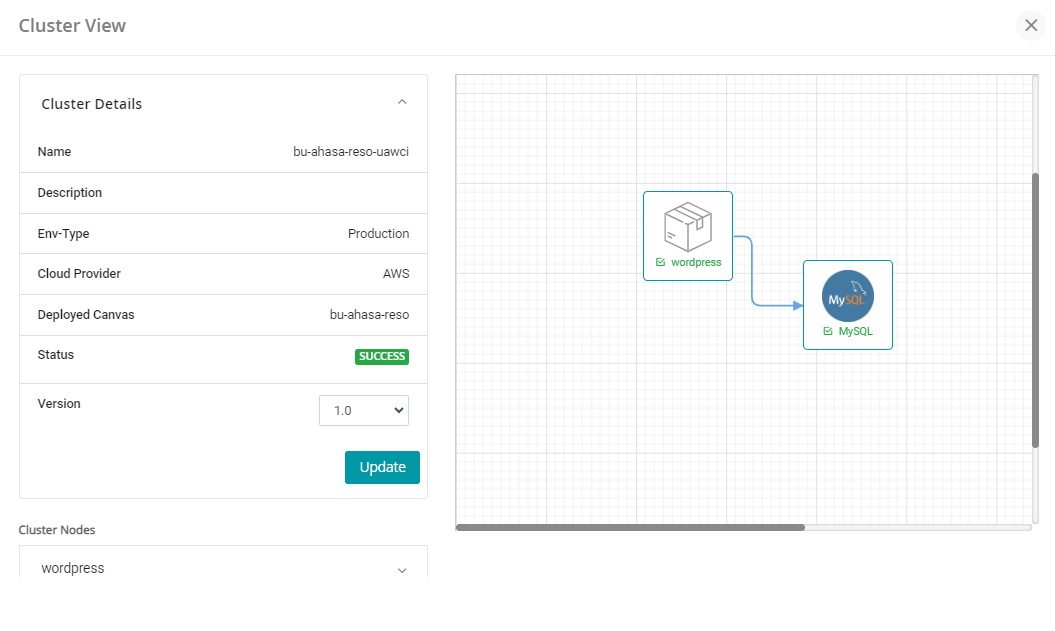
10.4.3 Deleting a cluster #
1. Login to Ahasa.
2. On the Left Pane, click Clusters.

3. Select Ahasa Resources tab.

4. Select the required cluster and click ![]() Delete in the Actions column.
Delete in the Actions column.
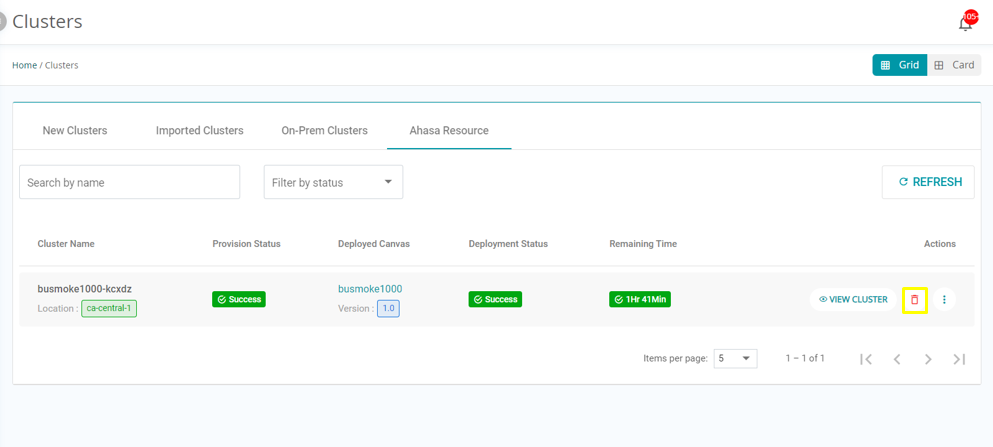
4. Click Yes to confirm the deletion.

10.4.4 Temporarily Suspending a Cluster #
1. Login to Ahasa.
2. On the Left Pane, click Clusters.

3. In the Ahasa Resource section, locate the required cluster and then click ![]() Option to expand the Extra Actions.
Option to expand the Extra Actions.
4. Select Temporary Suspend. Once the cluster is temporarily suspended, it can be reactivated at a later time.

5. Click Yes to confirm the suspension.
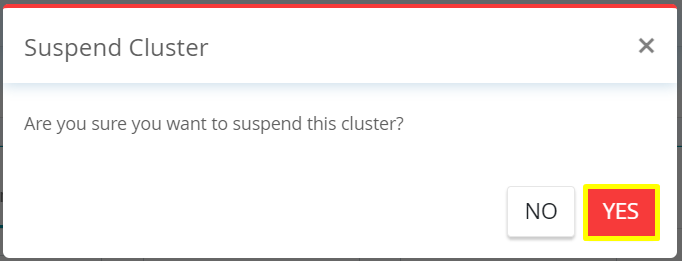
10.4.5 Alert Configurations #
1. Login to Ahasa.
2. On the Left Pane, click Clusters.
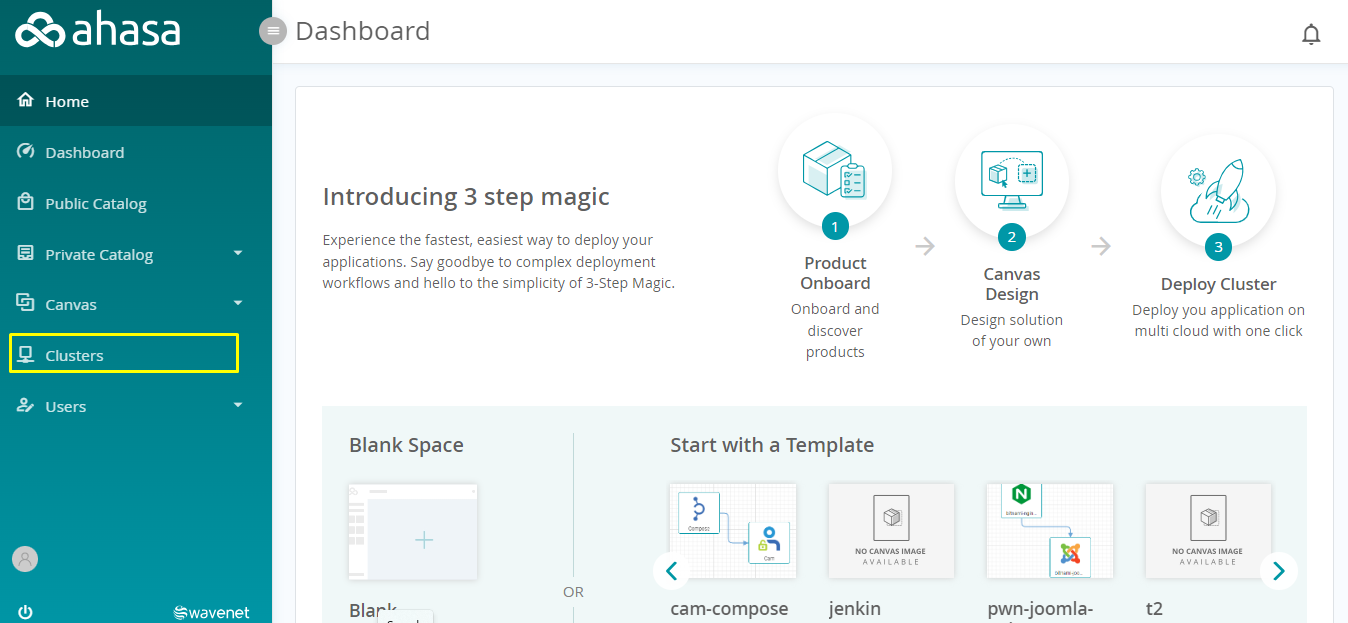
Figure 10.4.5.1: Navigating to Cluster Management
3. In the Ahasa Resource section, click ![]() Option to expand the Extra Actions. Select Alert Configurations.
Option to expand the Extra Actions. Select Alert Configurations.

4. Enter Cluster Alert Name, Type and Sub Type. Click NEXT.

5. Select a Priority from the given dropdown.

6. Select a user to send the alert.

Figure 10.4.5.5: Selecting a User
- Cluster Alert Name – Enter a name for the cluster alert.
- Type – Select type from the given drop down. The available options are Service Alert, Resource Alert, Node Alert. Once you select a Type, Sub Type will be listed below the Type section. Select the sub type.
- Priority – Select a priority from the given drop down. The available options are Critical, Warning, Info.
- Send Alert To – Enter an email address to send the alert.
10.4.6 Ingresses Options #
1. Login to Ahasa.
2. On the Left Pane, click Clusters.

3. In the Ahasa Resource section, click ![]() Option to expand the Extra Actions. Select Ingresses Options.
Option to expand the Extra Actions. Select Ingresses Options.

4. Click CREATE.
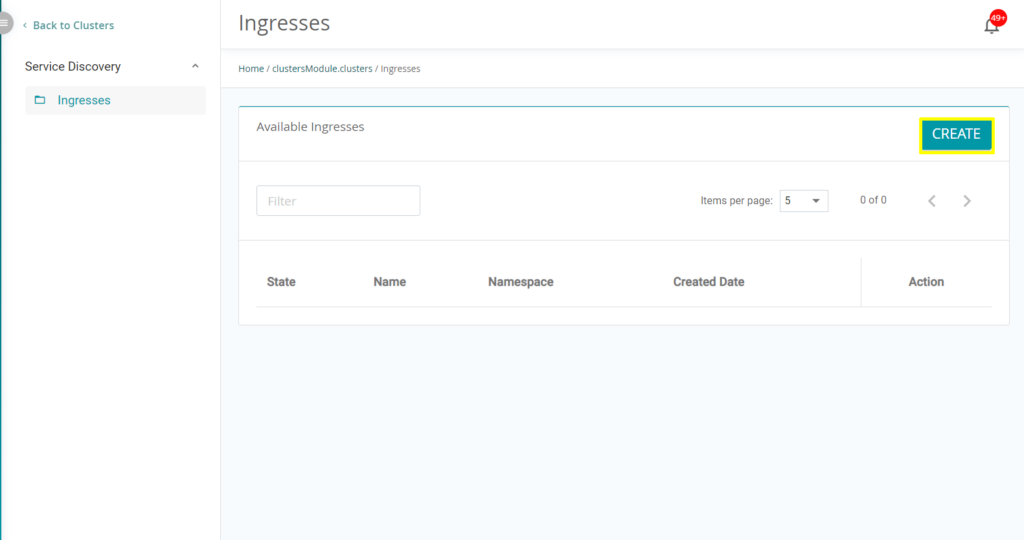
5. Fill the following information and click ADD RULE.

6. Click CREATE.
- Namespace – Namespaces isolates groups of resources within a single cluster. Names of resources need to be unique within a namespace, but not across namespaces. Namespaces cannot be nested inside one another and each Kubernetes resource can only be in one namespace.
- Name – Enter a name.
- Description – Enter a description.
- Request Host – Host must match the content of an incoming request before the load balancer directs traffic to the referenced Service.
- Path – Each path in an Ingress is required to have a corresponding path type. Paths that do not include an explicit pathType will fail validation. There are three supported path types:
- ImplementationSpecific: With this path type, matching is up to the IngressClass. Implementations can treat this as a separate pathType or treat it identically to Prefix or Exact path types.
- Exact: Matches the URL path exactly and with case sensitivity.
- Prefix: Matches based on a URL path prefix split by /. Matching is case sensitive and done on a path element by element basis. A path element refers to the list of labels in the path split by the / separator. A request is a match for path p if every p is an element-wise prefix of p of the request path.
- Target Service – Select Target Service.
- Port – Port used to expose the service on each node in a cluster.
10.4.7 Cluster Logs #
1. Login to Ahasa.
2. On the Left Pane, click Clusters.
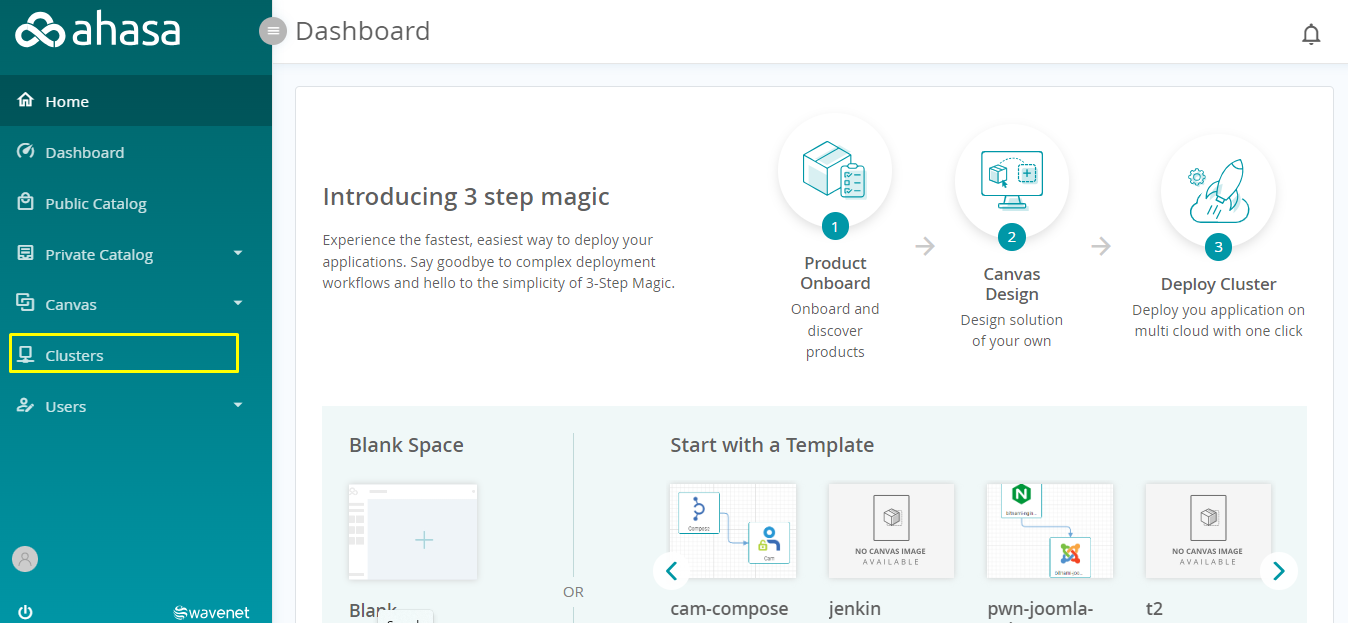
3. In the Ahasa Resource section, click ![]() Option to expand the Extra Actions. Select Logs.
Option to expand the Extra Actions. Select Logs.

4. Fill the following information.

5. The log will be generated as follows.

6. Click RESET to set the fields to default status.
7. Click CLEAR LOG to clear the generated log.
8. Click GENERATE LOG to generate the log again.
- Workloads – Select a workload from the given dropdown.
- Pods – Select a pod from the given dropdown.
- Containers – Select a container from the given dropdown.
10.4.8 Monitoring a Cluster #
1. Login to Ahasa.
2. On the Left Pane, click Clusters.

3. In the Ahasa Resource section, click ![]() Option to expand the Extra Actions. Select Monitoring to go to the monitoring page.
Option to expand the Extra Actions. Select Monitoring to go to the monitoring page.






